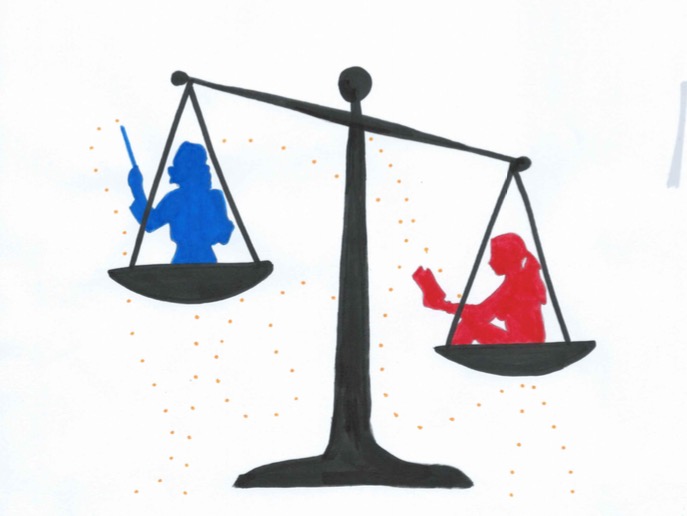As a student, it is inevitable to hear the cries of distressed teens sulking down the halls complaining about their stress and their schoolwork. The daunting college search and sleepless nights spent cramming for a test are a burden every high school student needs to bare at one point or another. It’s been widely known that many students are constantly having a hard time conquering their academic life; however, many disregard the efforts teachers make to improve the learning environment for students at RHS.
I conducted a short questionnaire for several RHS students and teachers to get a sense of what the RHS community’s opinion on the topic are, and their varying responses only prove how diverse our view of teaching and learning at RHS are, all depending on our different experiences at RHS and from opposing perspectives both as the teacher or as the student.
While the entire school community centers around making learning better for students, the teachers’ working conditions and responsibilities are most often ignored. From the teacher’s point of view, various teachers at RHS try, at different lengths, to lessen the stress for the overall student body, their own workload and stress is increased in doing so. By taking advantage of advancing technology, both teachers individually and the school have worked to make learning more efficient through the use of Chromebooks, class websites, Google classroom, and online participation. Policies, such as enrichment days, period 9, and school emailing are created by the school system in order to allow students to manage their time better; but, whether or not students take advantage of these policies leaves the usefulness of such policies unclear.
Obviously, a major distinction between students and teachers is that teachers are the ones being paid; thus, teachers should be expected to perform their job to the best of their ability. They have chosen to become a teacher and to handle whatever stress or workload that ensues accordingly, whereas students do not necessarily have the choice to become students. From the questionnaire, each teacher is in charge of grading the work of about 120 students. Depending on the class material and subject, the amount of time spent grading varies. However, most of the time, their time spent on school work is consistent, unlike students, who have voiced that their workload ranges from having to spend up from as little as an hour to almost eight hours on homework and projects. Some students believe that with the additional pressure of the college search, extracurriculars, standardized testing, etc., students have it far worse than teachers. Others sympathize with the teachers, who spend time outside of school to aid students in understanding the class materials. However, most students find that it all depends on the amount of effort individual teachers make for students. Yet, the same goes for students.
Students who choose to take advantage of the many opportunities the school and the teachers provides for them should be grateful for the extensive effort they take in sacrificing their own time to help students. Yet other students, who decide not to use period 9 or to individually seek help, should definitely not be blaming teachers who do in fact offer ample opportunities.
In the end, neither party is truly at fault for “having it worse” at RHS. Whether students or teachers work above and beyond for themselves and each other or they choose to ignore the severity of the work both sides have to endure, it all comes down to how anyone approaches the workload or the stress and how they work to make themselves or others feel more comfortable at RHS. What is important is to always keep an open mind for the perspectives of both students and teachers.
Janus Kwong
staff writer
Graphics: Anika Tsapatsarsis

